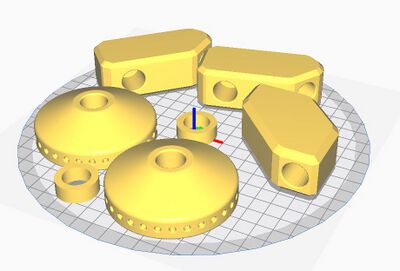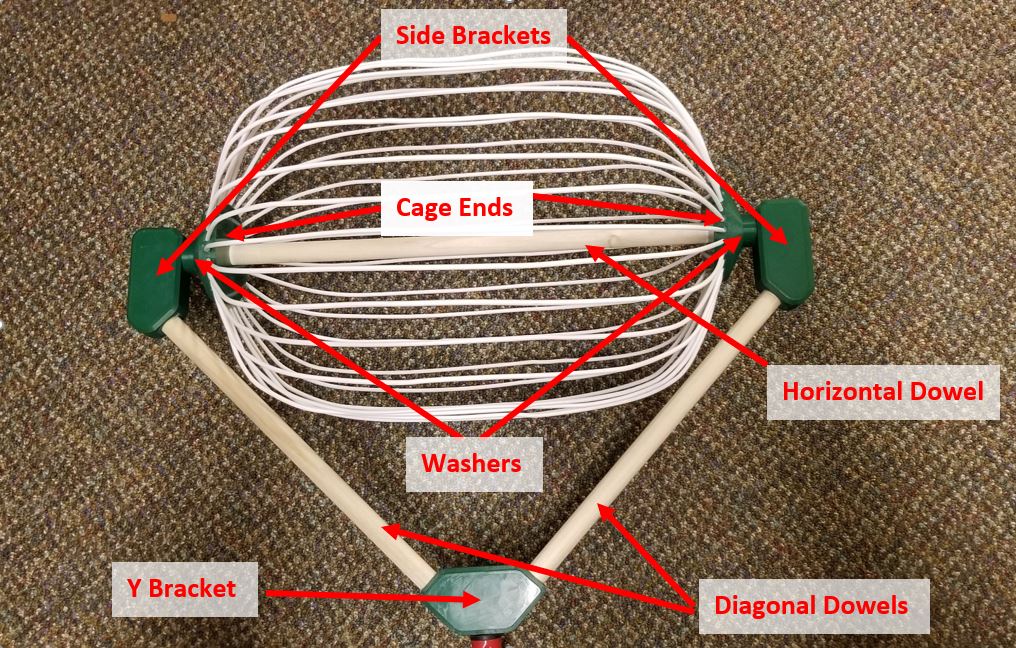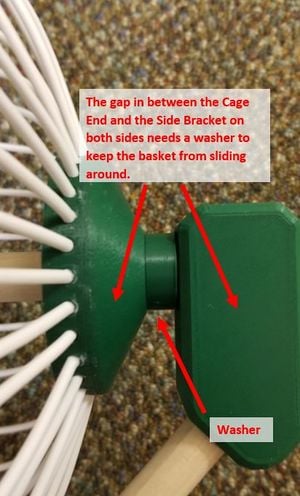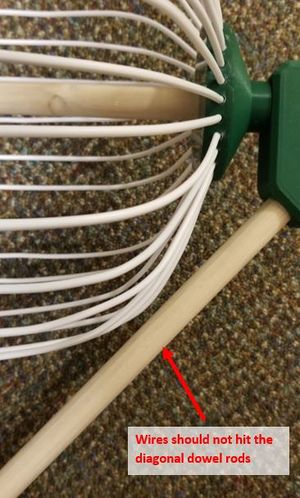No edit summary |
|||
| Line 17: | Line 17: | ||
== Bill of Materials== | == Bill of Materials== | ||
The bill of materialls includes the 3D printed parts and the required purchased or recycled parts. Prices for the prototype can be found in [Ground collector | The bill of materialls includes the 3D printed parts and the required purchased or recycled parts. Prices for the prototype can be found in [[Ground collector#Cost savings | Cost savings]] | ||
# 3D Printed Parts [https://www.youmagine.com/designs/mtu-mse4777-ground-collector YouMagine Page] | # 3D Printed Parts [https://www.youmagine.com/designs/mtu-mse4777-ground-collector YouMagine Page] | ||
#* 2x Side Brackets | #* 2x Side Brackets | ||
Revision as of 03:44, 5 December 2019
OSTAT Ground Collector
Project developed by Andy Finch Fall Semester 2019
Template:Statusboxtop Template:Status-design Template:Status-prototype You can help Appropedia by contributing to the next step in this OSAT's status. Template:Boxbottom
Abstract
This ground collector is based on the nut, golf ball, tennis ball, or fruit collectors that are on the market. Simply put, a rolling cage is affixed to the end of a broom stick and is pushed across the ground. Any object that is on the ground pushes apart the wires of the cage and is trapped inside. The ground collector consists of 3D printed parts, hanger wire, dowel rods, and a broom stick. The FreeCAD Files are included in the YouMagine page so anyone can edit the files and use any size wire, dowel rod, and broom stick.
The prototype that was made represents one of many cage sizes that could be made. The FreeCAD files can be edited to account for any cage size. If you are interested in making this ground collector, it is suggested that you determine the distance between the cage splines based on the item that is being collected. Smaller objects, like nuts, will require the wires to be closer together, and larger objects, like tennis balls, will require large gaps in between the wires. Once these dimension are determined, the FreeCAD files will need to be changed.
(If someone is willing to improve Andy Finch's design, check the Suggestions for Improvements section.)

Bill of Materials
The bill of materialls includes the 3D printed parts and the required purchased or recycled parts. Prices for the prototype can be found in Cost savings
- 3D Printed Parts YouMagine Page
- 2x Side Brackets
- 1x Y Bracket
- 2x Washers
- 2x Cage Ends
- Purchased or Recycled Parts
- Wire (suggested source: coat hangers)
- Dowel Rod (sticks could replace dowel rods)
- Broom Stick (a long stick or branch could be used in place of the broom handle)
(The prototype used 30 coat hangers, 2x 1' long 5/8" dowel rods, 1x 19" long 5/8", and a paint roller extension)
Tools needed for fabrication of the OSAT
- MOST Delta RepRap or similar RepRap 3-D printer
- Glue or Epoxy
- Wire Cutters
- Saw
- Ruler or Tape Measure
Skills and Knowledge Necessary to Make the OSAT
- The one skill you will need is to be able to edit the FreeCAD files to account for your chosen:
- Wire gage (default 1/8")
- Number of wires that make up the basket (default 30)
- Hole diameter for the dowel rods (default 5/8")
- Broom hole diameter (default 11/16")
Technical Specifications and Assembly Instructions
Printing
- Prototype was printed in PLA with 10% infill and 1.2mm wall thickness
- Estimated print time: Approximately 16 hours
Assembly Process: 1.5 hours (reference picture below)
- The fit of the dowel rods and broom stick should be checked with the 3D Prints
- The diagonal and horizontal dowel rods are cut to the required length (Prototype: 12 inches for both diagonal dowels and 19" for horizontal dowel)
- The dowel rods, side brackets, Y bracket, cage ends, and broomstick should be dry fit together.
- With everything test fitted together, the desired wire length should be determined. (Prototype: The wire lengths were found to be close to 19.5" long)
- Once the wire length is determined, all of the wires that make up the cage should be cut to length. (Prototype: 30 wires make up the cage)
- The entire cage should be dry fit together, and the shape of the cage can be bent to the desired shape.
- Once the desired cage shape is achieved, entire ground collector can be assembled. The cage should not slide side to side, so washers should be included.
- The dowels and broom stick can be glued/epoxied in place once the dry fit is checked for issues.
| Ground Collector Demonstration |
|---|
Error in widget YouTube: Unable to load template 'wiki:YouTube' |
Common Problems and Solutions
- Bending all of the coat hangers to a similar shape can be difficult.
- Solution: Install and glue all of the coat hangers into the Cage Ends, and then tweak the shape of the coat hangers' profile so they are symmetric.
- The Cage ends need to ride against the Side Brackets so the cage does not slide side to side.
- Solution: If they cage ends do not reach and contact the Side Brackets, edit the length of the Washer's FreeCAD model to fill the gap in between. (image below)
- Wires should be dry fit and tested to see if the hit the diagonal dowel rods. If the wires hit, re-bend them or shorten their length. (image below)
Cost savings
Part Cost Total $19.62
- 30x Coat Hangers (or equivalent wire) $4.32
- 2x 5/8"-36" Dowel Rods (or equivalent stick) $8.58
- Broom Handle (or equivalent handle) $3.32
- 3D Print's Material Cost $3.40 (assuming $20/kg of PLA)
Prices for non-3D printed parts are based on the items purchased for the prototype. Recycled wire and wood could be substituted in place of store purchased items.
Commercial Equivalent
Savings
- Compared to the cheapest Walmart gather, the 3D printed ground gather brings the price down by a third.
- If recycled wood rods and wire were used in place of the purchased coat hangers and dowel rods, the price of the 3d printed ground gather could be decreased further.
Suggestions for Improvements
- Andy Finch originally modeled the parts in FreeCAD. If someone is willing to improve the ground collector, the design would benefit if someone could model the parts in OpenSCAD. Then the parts could be more easily edited.
- The design would be greatly improved if someone could create a calculator for determining the correct gap width for in between the cage wires based on the object that is being collected. It would be even better if this calculator could be incorporated with the remake in OpenSCAD.
Benefited Internet Communities
- Golf
- Golfers or driving ranges could make cheaper golf ball collects than the current ones on the market.
- Tennis
- Tennis players could creating their own ball collector instead of purchasing an expensive one.
- Nut Collecting
- Anyone with a tree that produces nuts might be interested in harvesting them, but they do not want to purchase an expensive Nut Wizard.
- Windfall Apples
- Apples that fall on the ground, windfall apples, can be collected and used for cider or animal feed.
- Acorn Removal
- Removing acorns so as not to cause accidents with lawn mowers, or remove them to prevent them from sprouting.


